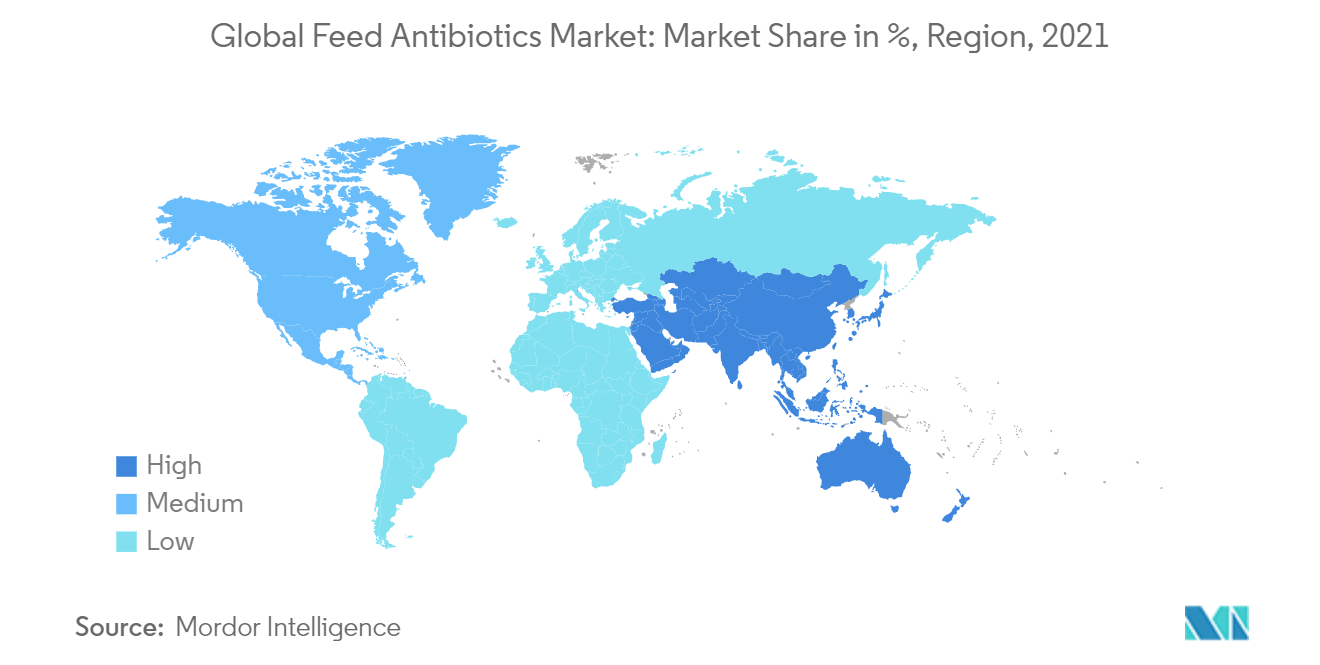Market Trends of Global Feed Antibiotics Industry
This section covers the major market trends shaping the Feed Antibiotics Market according to our research experts:
Rising Demand for Animal Derived Food Products
Animal-originated food products such as veal, beef, lamb, buffalo meat, goat meat, pork, milk and dairy products, poultry meat, and eggs. Despite the growing global concern regarding antimicrobial resistance in humans owing to the use of antibiotics in livestock, meat demand is increasing every year. According to FAO, global consumption of meat proteins over the next period is estimated to rise by 14% by 2030 compared to 2018-2020, propelled largely by population growth and income. Protein availability from poultry, beef, pork, and sheep meat is expected to grow by 17.8%, 5.9%, 13.1%, and 15.7%, respectively, by 2030.
Further, South Asia is one of the major regions for dairy production and accounted for 20-25% of the global milk production in 2019. In this region, India was the biggest producer and consumer of milk, followed by China and Pakistan. In 2020, the utilization of meat in India was over 3.9 million ton; by 2030, this is projected to increase to 145.7 million ton (by FAO).
Further, according to the American Meat Institute, ingesting the meat of the animal treated with antibiotics causes antimicrobial resistance in humans (resistance to those antibiotics). Governments of various countries are following strict regulations to monitor and regulate the usage of antibiotics by educating farmers and so on. This abolishes the misconception of use in livestock, leading to an increase in meat demand, raising the need for quality meat production with the help of antibiotics. Thus, the demand for antibiotics for feeding will grow owing to the surge in demand for animal-derived food products.

Asia Pacific is the Largest Market
In the Asia-Pacific region, Japan and Australia are the fastest growing countries whereas China has the largest market revenue share. In February 2020, a study conducted by Dongguan University of Technology, Dongguan, China, stated that in-feed antibiotic use changed the behaviors of oxytetracycline, sulfamerazine, and ciprofloxacin and related antibiotic resistance genes during swine manure composting.
According to the Food and Agricultural Materials Inspection Center, Japan stated that polyether antibiotics accounted for 87.6 % of the total (81.2 % in the previous FY), 7.0 % for orthosomycin antibiotics (14.2 % in the previous FY), 5.0 % for phosphoglycolipid antibiotics (4.7 % in the previous FY), and 0.4 % for polypeptide antibiotics (no application in the previous FY) in FY 2020 for the specified feed additives category. The production of antibiotic feed antibiotics has constantly been declining for the past few years in the country. With the growing awareness of the negative effects of antibiotics, the demand for other feed additives such as probiotics and other products is increasing.
In 2018, the Australian Lot Feeders' Association established Antimicrobial Stewardship Guidelines to promote responsible antimicrobial use. Since then, 62% of the industry has voluntarily adopted antibiotic stewardship plans in their businesses. The industry is currently working towards making these guidelines mandatory by 2022.


